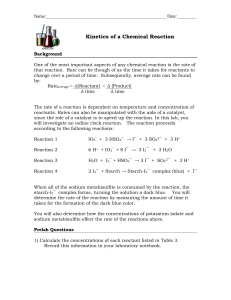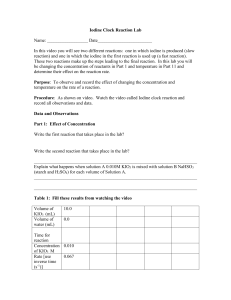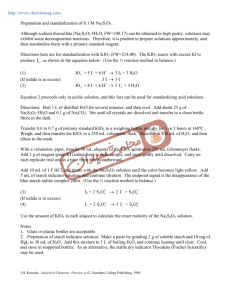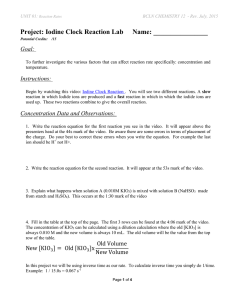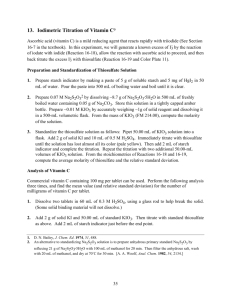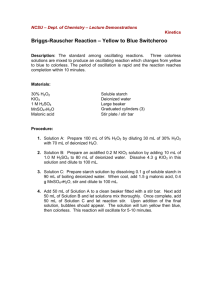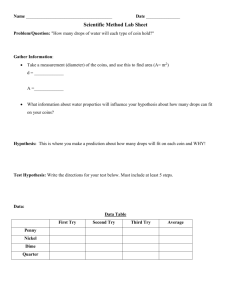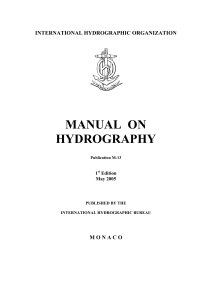Iodine Clock Reaction Lab: Concentration & Rate
advertisement
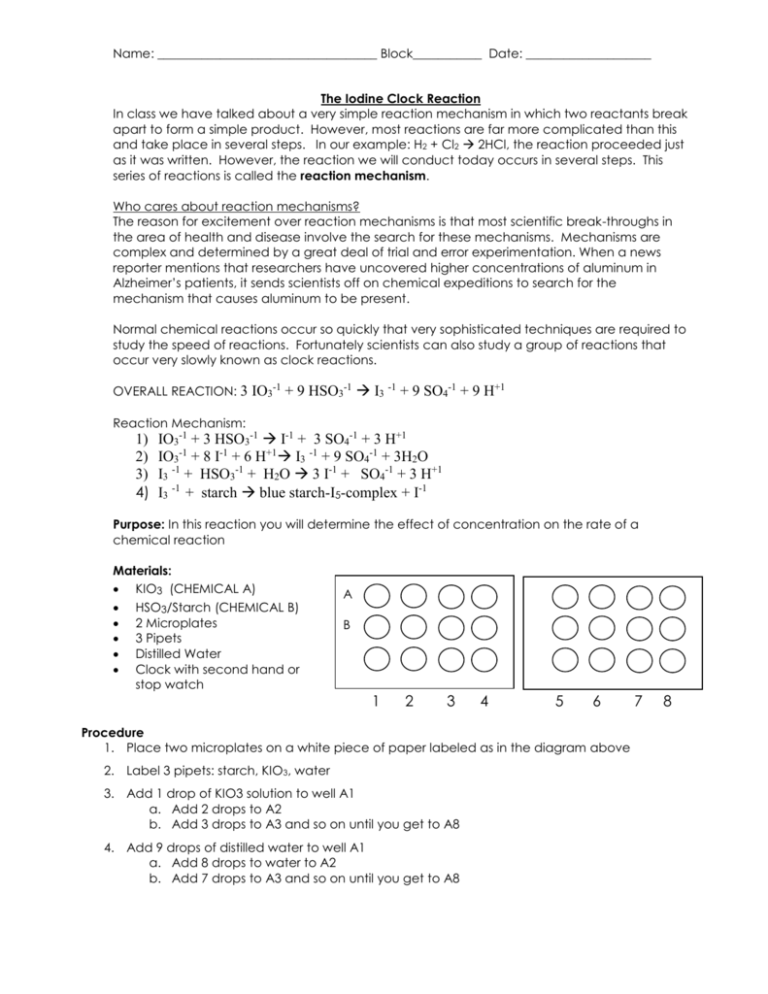
Name: ___________________________________ Block___________ Date: ____________________ The Iodine Clock Reaction In class we have talked about a very simple reaction mechanism in which two reactants break apart to form a simple product. However, most reactions are far more complicated than this and take place in several steps. In our example: H2 + Cl2 2HCl, the reaction proceeded just as it was written. However, the reaction we will conduct today occurs in several steps. This series of reactions is called the reaction mechanism. Who cares about reaction mechanisms? The reason for excitement over reaction mechanisms is that most scientific break-throughs in the area of health and disease involve the search for these mechanisms. Mechanisms are complex and determined by a great deal of trial and error experimentation. When a news reporter mentions that researchers have uncovered higher concentrations of aluminum in Alzheimer’s patients, it sends scientists off on chemical expeditions to search for the mechanism that causes aluminum to be present. Normal chemical reactions occur so quickly that very sophisticated techniques are required to study the speed of reactions. Fortunately scientists can also study a group of reactions that occur very slowly known as clock reactions. OVERALL REACTION: 3 IO3-1 + 9 HSO3-1 I3 -1 + 9 SO4-1 + 9 H+1 Reaction Mechanism: 1) 2) 3) 4) IO3-1 + 3 HSO3-1 I-1 + 3 SO4-1 + 3 H+1 IO3-1 + 8 I-1 + 6 H+1 I3 -1 + 9 SO4-1 + 3H2O I3 -1 + HSO3-1 + H2O 3 I-1 + SO4-1 + 3 H+1 I3 -1 + starch blue starch-I5-complex + I-1 Purpose: In this reaction you will determine the effect of concentration on the rate of a chemical reaction Materials: KIO3 (CHEMICAL A) HSO3/Starch (CHEMICAL B) 2 Microplates 3 Pipets Distilled Water Clock with second hand or stop watch A B 1 2 3 4 5 6 Procedure 1. Place two microplates on a white piece of paper labeled as in the diagram above 2. Label 3 pipets: starch, KIO3, water 3. Add 1 drop of KIO3 solution to well A1 a. Add 2 drops to A2 b. Add 3 drops to A3 and so on until you get to A8 4. Add 9 drops of distilled water to well A1 a. Add 8 drops to water to A2 b. Add 7 drops to A3 and so on until you get to A8 7 8 Name: ___________________________________ Block___________ Date: ____________________ 5. In row B, add 10 drops of HSO3/starch to wells B1 through B9 6. With a stop watch in hand, add the contents of well A1 to well B1. Start timing immediately after solutions are added together. It is usually better to add the contents of A to B since the starch solution tends to settle out as solutions stand. 7. Enter the number of seconds required for well B1 to turn blue in the data table. 8. Repeat this mixing and timing procedure for all the remaining well pairs. Data: Table 1: Iodine Clock Reaction Times and Concentrations Well 1 2 3 4 5 6 Drops KIO3 Time start 7 8 Time End time Analysis: 1. Graph your results with time on the X-axis and drops KIO3 solution on the Y-axis. Print and attach graph to lab report Conclusion Questions: 1. What happens to the time of the reaction (increases or decreases) as the number of drops KIO3 solution increases? 2. Well 6 contains twice the concentration of KIO3 solution as well 3. Divide the number of seconds of reaction well 6 by the number of seconds of reaction well 3. Is the fraction closer to ¼, 1/3, or ½? 3. As the concentration of KIO3 solution doubles, the rate of the reaction ____________________. 4. Look at steps 2 and 3 in the reaction mechanism. What substance is a product in 2 and a reactant in 3? Name: ___________________________________ Block___________ Date: ____________________ 5. Which substance reacts with starch to turn the solution blue? 6. What is the limiting reactant in this reaction? 7. Using your answers from 4, 5 and 6, why does it take so long for the blue color to appear? 8. Do you think the rate of each step in the mechanism is the same? What factors affect reaction rate? How could you speed up or slow down this reaction?
